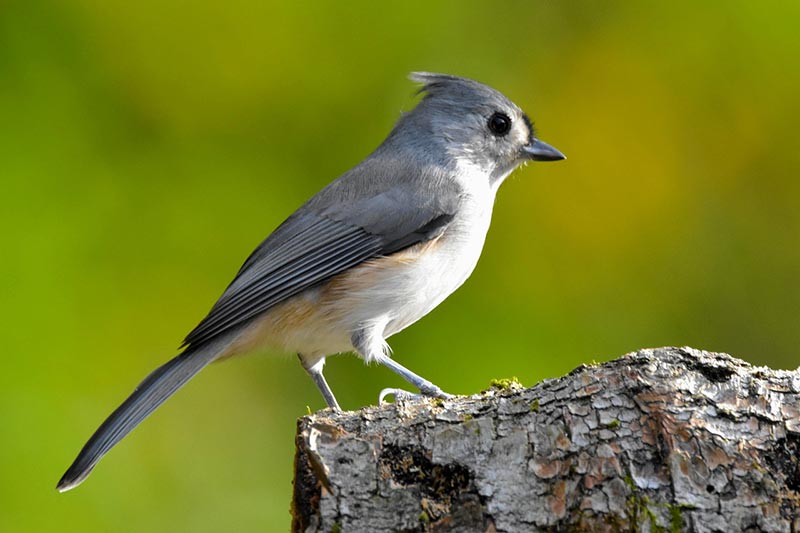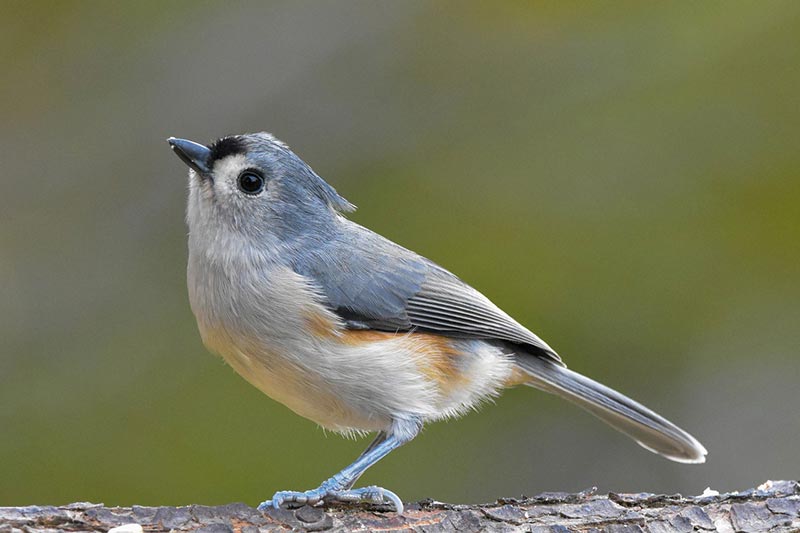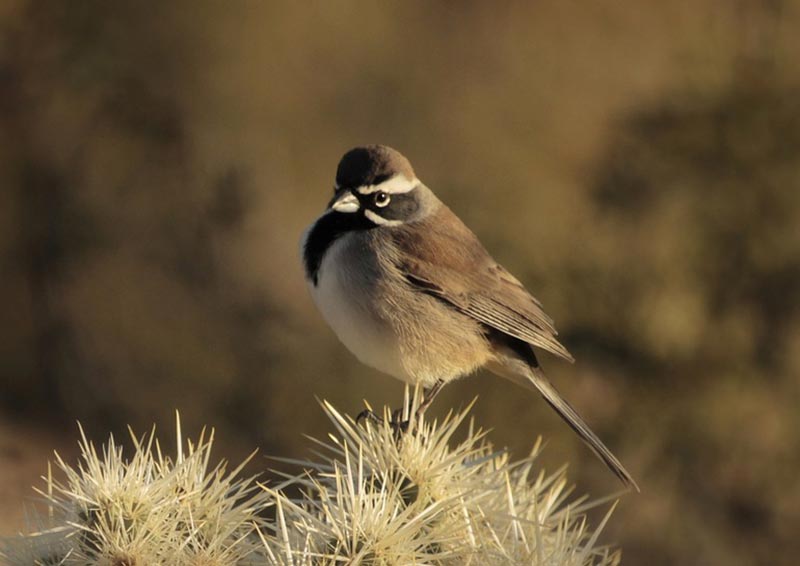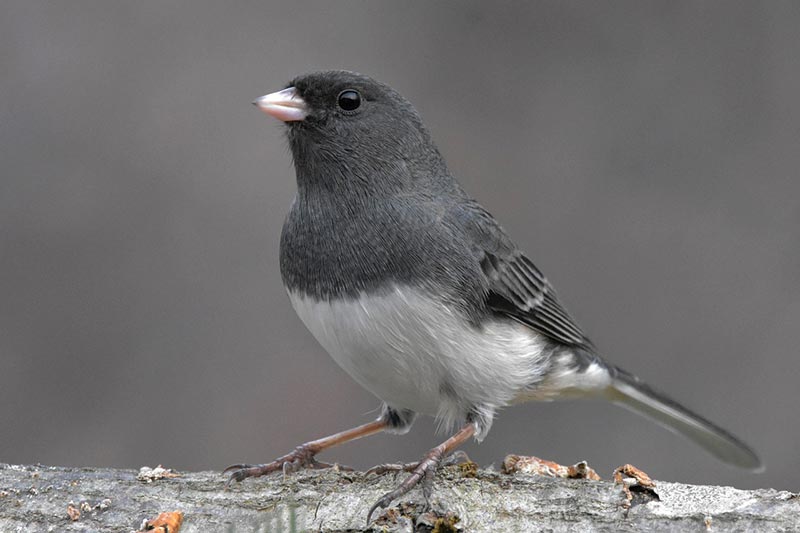9 Birds That Look Like Chickadees (With Pictures)
Last Updated on

The chickadee is a small, colorful and acrobatic bird found in the forests of North America. Friendly and curious, they have a confiding nature that many birders find charming. Chickadees nest low to the ground, which is unexpected for a bird of this small stature due to natural enemies. They are also very talkative, and you’ll hear chickadees whenever you go for a walk in the woods. Chickadees also have a surprisingly long lifespan of about 10 years, likely due to their incredibly high-pitched predator warning system.
One interesting challenge many bird watchers have is telling the difference between chickadees and several other bird species. That’s because many birds, although different, have a similar whitish chest and black head. Below we’ll look at several birds that look a lot like chickadees. If you’d like to know the differences and what to look for when birding, read on to learn more!

The 9 Birds That Look Like Chickadees
1. Tufted Titmouse

One bird that is mistaken for a chickadee (and vice-versa) is the tufted titmouse. Both share North America’s deciduous and coniferous forests, but the tufted titmouse can also be found in Mexico, Central America, and southern Canada. The main difference between the two birds is that, while the chickadee has dark brown coloring, the tufted titmouse is mostly grey, white, and black. They also have their signature black tuft on their head that looks like a mohawk and share a similar diet to their feathered cousin.
2. American Tree Sparrow

It’s similar in size to the chickadee, but the American tree sparrow has few other true similarities. They are mostly dark brown, but, like chickadees, they have a whitish chest. One way to tell the two birds apart is to listen to their songs. The American tree sparrow’s song sounds like it’s saying “chip,” while the chickadee sounds more like “chickadee-dee-dee.” Like the chickadee, the American tree sparrow spends most of its time in the forest. Also, as the most common bird in North America, you’ll see them all the time. Unlike chickadees, however, the American tree sparrow migrates for the winter. They fly further than any other sparrow when migrating!
3. Black-throated Sparrow

The black-throated sparrow is very similar to chickadees, especially the female of the species. Both males and females have the same black-capped head, white cheeks, and black tail, but the female has a brown back that’s very much like a chickadee. Both birds share a similar territory in North America. However, the black-throated sparrow has spread to more parts of the West, including Arizona, California, and New Mexico. Unlike chickadees, the black-throated sparrow is a migratory bird. What’s interesting, though, is that their breeding range tends to change over the years.
4. Black-tailed Gnatcatcher

Like the chickadee, the black-tailed gnatcatcher is non-migratory, which means it stays put during the winter. That might be why the small, bluish-gray birds are often mistaken for chickadees. They also have the same whitish breast and black head (crown), but their bill has more of a curve. Black-tailed gnatcatchers also have shorter, stronger legs than chickadees. Their territory is also a bit different, as they are mostly found on the West coast of North America. Like the chickadee, the black-tailed gnatcatcher loves dense forests, but they tend to go to a much higher elevation during nesting season.
5. White-breasted-Nuthatch

Although mistaken for chickadees, the white line over its eye is the easiest difference to spot on the white-breasted nuthatch. One trait it shares with the chickadee is that the white-breasted nuthatch is a very common bird found in deciduous and coniferous forests in North America. Although they sometimes will move southward in winter, for the most part, the white-breasted nuthatch is a non-migratory bird like the chickadee. Their diet is very similar: mostly insects and seeds from berries. Another notable difference is that the white-breasted nuthatch is about 20% larger than the chickadee.
6. Blackpoll Warbler

Several differences between the blackpoll warbler and the chickadee make them easier to differentiate from other small birds. The blackpoll warbler’s cap extends down its back. They also have much more of a yellowish color, and their wings, when seen from below, are gray. Also, the blackpoll warbler’s bill is black, whereas the chickadees are yellow. One major difference is that blackpoll warblers have a very long migration. They breed in Canada, the Yukon, and the Northwest but spend summers in Mexico and Panama. When they migrate, it’s common to see blackpoll warblers along the southeastern US in the same forests as chickadees.
7. Blue-gray Gnatcatcher

One of the big differences between the chickadee and the blue-gray gnatcatcher is their song, which is more high-pitched. They are also about 20% larger than chickadees but also look quite similar. Another significant difference is where both birds like to live. Blue-gray gnatcatchers like open woodlands with shrubs and vines, while chickadees, as we know, love thick forests. Insects are the blue-gray gnatcatchers’ food of choice, like chickadees, but their territory is vastly different. It includes Southern California, Texas, and Southern Florida.
8. Downy Woodpecker

There are a lot of differences between a woodpecker and a chickadee. However, a downy woodpecker and chickadee look surprisingly similar. One difference that’s easy to spot is their bill. The downy woodpecker’s bill is longer, which isn’t surprising considering they drill holes in trees to find food. They have a similar black crown and white chest. However, their chest and other feathers are more down-like to keep them warm in winter.
9. Dark-eyed Junco

Although they often look surprisingly different, some birders mistake the dark-eyed junco for chickadees. One reason is their black crown or cap, which is similar to the chickadee. One large difference, though, is that dark-eyed juncos are about 25% larger and rounder than chickadees. Indeed, some dark-eyed junco species can be almost double the chickadees’ weight. The last major difference isn’t one you’ll see while birding since it has to do with their numbers. There are about 630 million dark-eyed juncos in the wild as opposed to 43 million chickadees (give or take a few hundred thousand). They do, however, share very similar habitats and territories.
•You might also like: Do Juncos Migrate? What Do They Do in the Winter?

Conclusion
As we’ve seen, several birds look like chickadees, but all have their telltale differences. The physical differences typically lean towards the coloring on their head and chest. Some species that look like chickadees are also a bit bigger, including the downy woodpecker. Most have a black crown and white chest, and almost all love deep, thick forests of the deciduous and coniferous kind. We hope our information on the 14 birds that look like chickadees has been entertaining and useful. Best of luck telling the difference between chickadees and other bird species next time you’re out birding!
Featured Image Credit: JackBulmer, Pixabay
About the Author Greg Iacono
Greg Iacono is a self-taught writer and former chiropractor who, ironically, retired early due to back problems. He now spends his time writing scintillating content on a wide variety of subjects. Greg is also a well-known video script writer known for his ability to take a complex subject and make it accessible for the layperson.
Related Articles:
Monocular vs Telescope: Differences Explained (With Pictures)
10 Types of Hummingbirds in Arkansas (With Pictures)
8 Types of Hummingbirds in Nebraska (With Pictures)
5 Types of Hummingbirds in Idaho (With Pictures)
3 Types of Hummingbirds in Mississippi (With Pictures)
8 Types of Hummingbirds in Kansas (With Pictures)
5 Types of Hummingbirds in West Virginia (With Pictures)
5 Types of Hummingbirds in Ohio (With Pictures)
